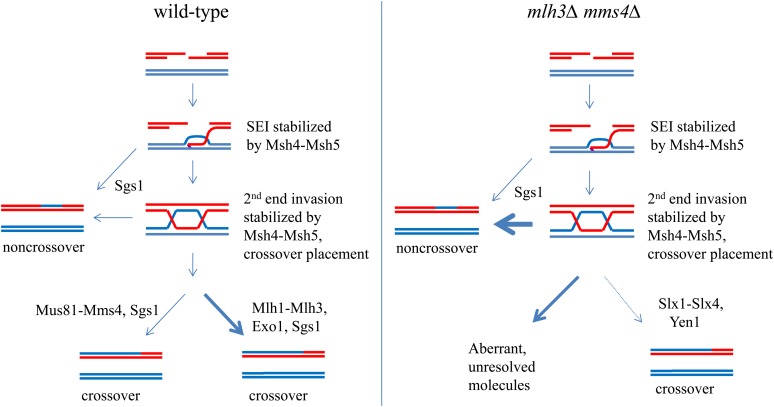Figure 5 .
Model of crossover pathways during meiosis. A summary of the crossover pathways are shown. In wild-type cells (left), DSBs are made and resected, and initial single-end invasion intermediates can be dissolved by Sgs1−dependent mechanisms, leading to noncrossovers. Single-end invasion intermediates that are not resolved as noncrossovers can proceed through the Mus81-Mms4 interference-independent pathway, leading to crossovers, or Msh4-Msh5 can stabilize the SEI in an interference-dependent mechanism. These stabilized joint molecules undergo crossover placement decisions, and are subsequently resolved in an Mlh1-Mlh3-dependent manner. In the absence of Mlh3 and Mms4 (right), initial recombination events occur as in wild type. However, due to the lack of the major Mlh1-Mlh3 and Mus81-Mms4 resolvase functions, other pathways are activated, including Sgs1-dependent resolution to form noncrossovers and other resolution activities (e.g., Slx-Slx4, Yen1), resulting in a larger number of events being resolved into noncrossovers.

